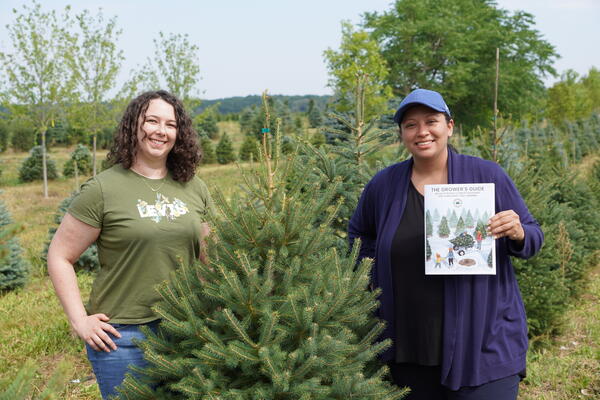
Our options for saving the Earth are becoming riskier
Massive engineering projects could reverse climate change and reduce poverty — but they are dangerous

Massive engineering projects could reverse climate change and reduce poverty — but they are dangerous
By Sam Toman Faculty of EnvironmentWith everything else going on, it’s easy to forget the climate crisis. Juan Moreno-Cruz, a researcher in the Faculty of Environment and a Canada Research Chair in Energy Transitions, has a not-so-gentle reminder.

Juan Moreno-Cruz
Professor, Faculty of Environment
> Canada Research Chair in Energy Transitions
> University of California, San Diego research collaboration
“Climate change is still out there and it’s only getting stronger,” he says, stressing that hopes for a co-ordinated effort in reducing emissions are vanishing. Riskier solutions to manage climate change should now be on the table.
What Moreno-Cruz wants us to get real about is the magnitude and urgency of the problem we face. With governments and industry moving too slowly, can big bold engineering ideas save us in the end?
Climate engineering, better known as geoengineering, is a hot-button topic. Debate is swirling around massive projects such as sucking carbon dioxide out of the sky so the atmosphere will trap less heat, and even launching a mirror into space to reflect sunlight away from the planet so less heat is absorbed.
“I know, this sounds like science fiction, but many scientists around the world are doing research on these options,” Moreno-Cruz says.
For Moreno-Cruz, Hail Mary engineering projects that place reflective particles in the sky give him pause. But his personal academic journey compelled him to examine the impact of climate change on vulnerable populations and this is a last stop.
As with most crises, the poorest people on the planet routinely suffer the most from the effects of climate change and, on occasion, even well-meaning climate-change solutions.
“As an engineering student in Colombia, I focused more on how to manage the pressing problems of a developing country. It was natural work, urgent work,” Moreno-Cruz says. “But the more exposure I had to academics from North America and Europe I saw the kinds of longer-term problems they were working on, climate change especially. The question formed in my head was: ‘How do we deal with a changing climate while also providing for the basic needs of poor populations?’”
A recent study in Nature Communications, co-authored by Moreno-Cruz and an international team of transdisciplinary researchers including Anthony Hardin and Katharine Ricke of University of California San Diego’s School of Global Policy and Strategy, reflects the culmination of this big-horizon work.
By collaborating with researchers around the world in engineering, economics, development studies and more, he’s discovered that at least one proposed geoengineering project — reflecting sunlight away from earth by releasing small reflective particles in the stratosphere — could help avoid the worst consequences of global warming and raise GDP in less affluent countries.
It’s a seductive gambit. The ability to simultaneously fight climate change and poverty — perhaps our two most wicked problems.
“We find hotter countries respond more to small changes in temperature,” Moreno-Cruz says. “Because poorer countries tend to be hotter, there is a disproportionate impact of climate on those countries. The reduction in temperature created by solar geoengineering would benefit poorer countries more than richer countries, reducing inequalities. The rich countries still benefit from solar geoengineering as well, so together, the world becomes richer.”
But there is still much uncertainty and some major risks to geoengineering approaches.
“I’ve talked with friends who are ecologists, including the Faculty of Environment’s Jeremy Pittman, and I have realized the issues that come with the introduction of solar geoengineering could threaten biodiversity,” Moreno-Cruz says. “Again it comes down to us accepting that this is not a solution, but a management strategy over a long timeline. Deploying radical technical projects and then not sustaining them could cause global temperatures to rebound much too fast. How will our ecosystem react?”
Moreno-Cruz stresses that he and his co-authors can’t advocate whether solar geoengineering should be implemented by Canada or elsewhere. “I am a nerd. I focus on one aspect of these projects. Making them a reality and making them fair to its people and the planet, can only happen if we think of climate change action as holistic,” he says.
“We should not be distracted by shiny new technologies. We need to understand them, but we must work to reduce emissions of greenhouse gases and we need to bring people up from poverty. Let’s make people better off. That’s the best way to manage climate change.”

Read more
Like epidemiologists, climate science knows how to flatten our climate curve, but politicians must listen first

Read more
Waterloo researchers are helping to make a much-loved holiday tradition more sustainable all year round

Read more
Researchers awarded funding to investigate ecology, climate change, repatriation, health and well-being through cultural and historical lens
The University of Waterloo acknowledges that much of our work takes place on the traditional territory of the Neutral, Anishinaabeg, and Haudenosaunee peoples. Our main campus is situated on the Haldimand Tract, the land granted to the Six Nations that includes six miles on each side of the Grand River. Our active work toward reconciliation takes place across our campuses through research, learning, teaching, and community building, and is co-ordinated within the Office of Indigenous Relations.